Neeraj Nixon
FLD+: Data-efficient Evaluation Metric for Generative Models
Nov 23, 2024Abstract:We introduce a new metric to assess the quality of generated images that is more reliable, data-efficient, compute-efficient, and adaptable to new domains than the previous metrics, such as Fr\'echet Inception Distance (FID). The proposed metric is based on normalizing flows, which allows for the computation of density (exact log-likelihood) of images from any domain. Thus, unlike FID, the proposed Flow-based Likelihood Distance Plus (FLD+) metric exhibits strongly monotonic behavior with respect to different types of image degradations, including noise, occlusion, diffusion steps, and generative model size. Additionally, because normalizing flow can be trained stably and efficiently, FLD+ achieves stable results with two orders of magnitude fewer images than FID (which requires more images to reliably compute Fr\'echet distance between features of large samples of real and generated images). We made FLD+ computationally even more efficient by applying normalizing flows to features extracted in a lower-dimensional latent space instead of using a pre-trained network. We also show that FLD+ can easily be retrained on new domains, such as medical images, unlike the networks behind previous metrics -- such as InceptionNetV3 pre-trained on ImageNet.
Evaluation Metric for Quality Control and Generative Models in Histopathology Images
Nov 01, 2024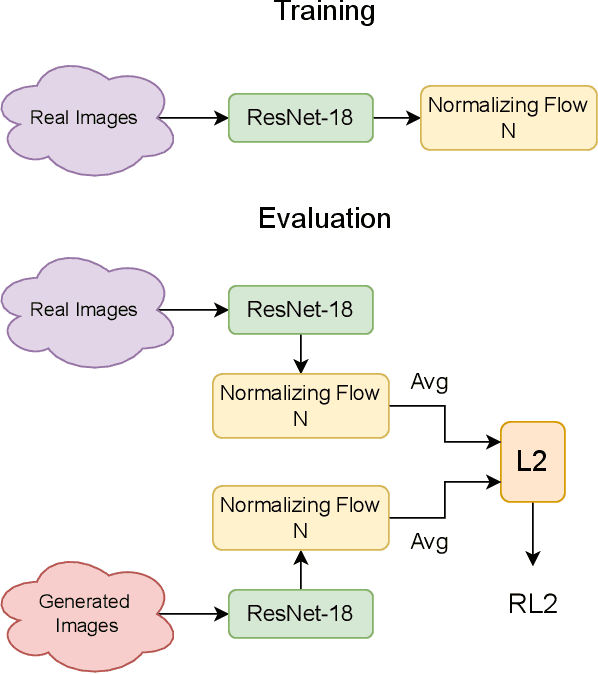
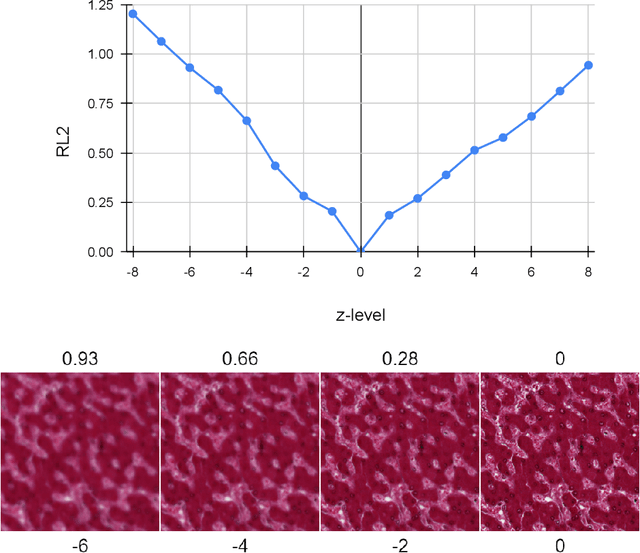
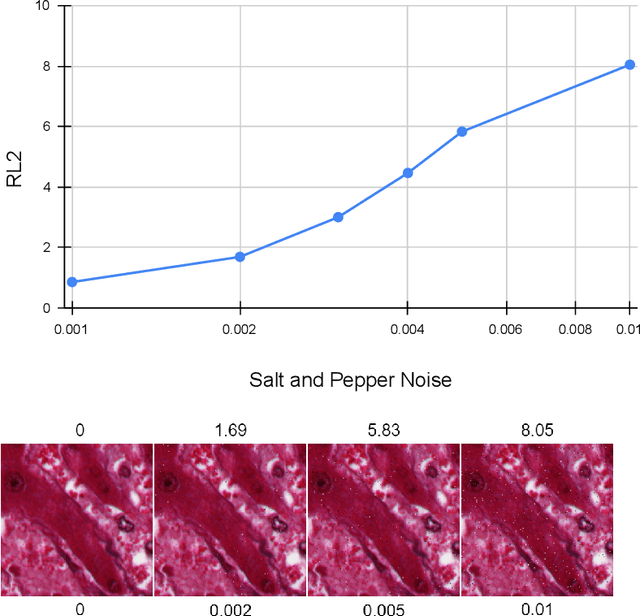
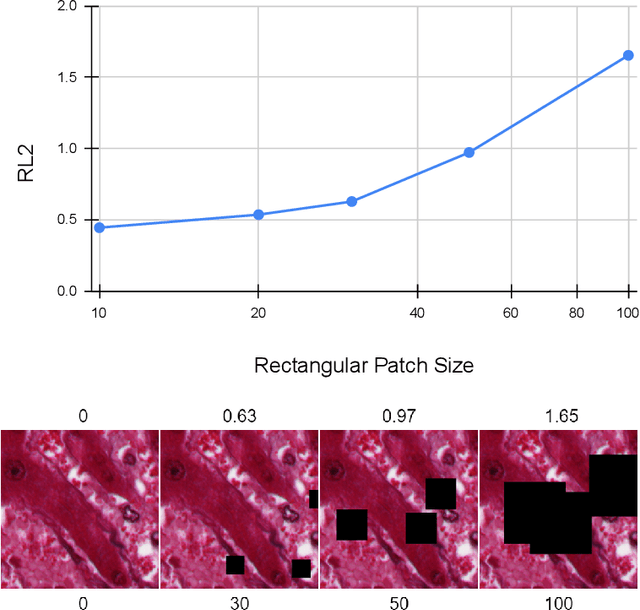
Abstract:Our study introduces ResNet-L2 (RL2), a novel metric for evaluating generative models and image quality in histopathology, addressing limitations of traditional metrics, such as Frechet inception distance (FID), when the data is scarce. RL2 leverages ResNet features with a normalizing flow to calculate RMSE distance in the latent space, providing reliable assessments across diverse histopathology datasets. We evaluated the performance of RL2 on degradation types, such as blur, Gaussian noise, salt-and-pepper noise, and rectangular patches, as well as diffusion processes. RL2's monotonic response to increasing degradation makes it well-suited for models that assess image quality, proving a valuable advancement for evaluating image generation techniques in histopathology. It can also be used to discard low-quality patches while sampling from a whole slide image. It is also significantly lighter and faster compared to traditional metrics and requires fewer images to give stable metric value.
Normalizing Flow Based Metric for Image Generation
Oct 02, 2024



Abstract:We propose two new evaluation metrics to assess realness of generated images based on normalizing flows: a simpler and efficient flow-based likelihood distance (FLD) and a more exact dual-flow based likelihood distance (D-FLD). Because normalizing flows can be used to compute the exact likelihood, the proposed metrics assess how closely generated images align with the distribution of real images from a given domain. This property gives the proposed metrics a few advantages over the widely used Fr\'echet inception distance (FID) and other recent metrics. Firstly, the proposed metrics need only a few hundred images to stabilize (converge in mean), as opposed to tens of thousands needed for FID, and at least a few thousand for the other metrics. This allows confident evaluation of even small sets of generated images, such as validation batches inside training loops. Secondly, the network used to compute the proposed metric has over an order of magnitude fewer parameters compared to Inception-V3 used to compute FID, making it computationally more efficient. For assessing the realness of generated images in new domains (e.g., x-ray images), ideally these networks should be retrained on real images to model their distinct distributions. Thus, our smaller network will be even more advantageous for new domains. Extensive experiments show that the proposed metrics have the desired monotonic relationships with the extent of image degradation of various kinds.
WaveMixSR-V2: Enhancing Super-resolution with Higher Efficiency
Sep 16, 2024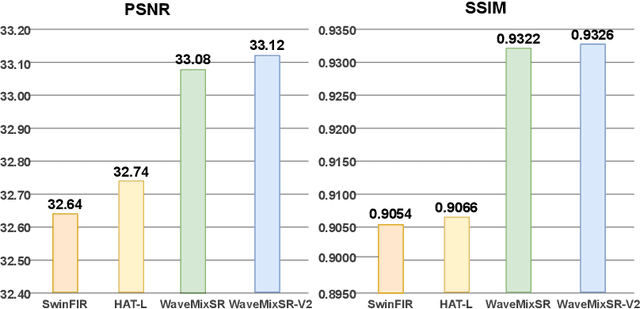
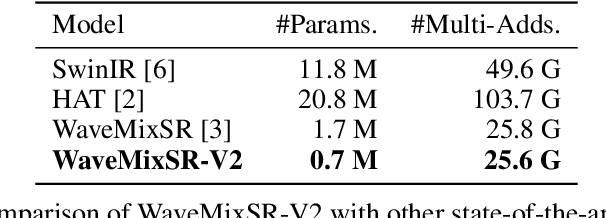

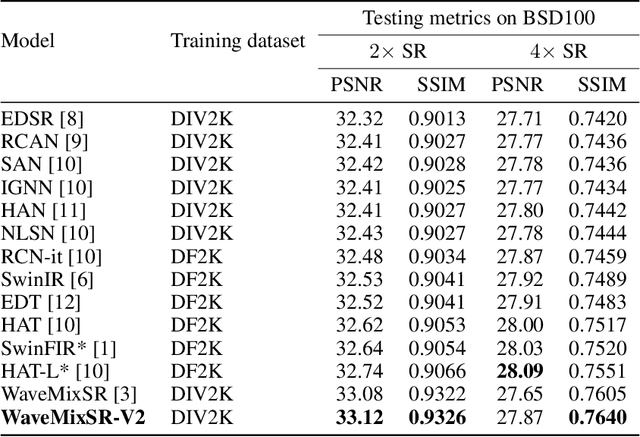
Abstract:Recent advancements in single image super-resolution have been predominantly driven by token mixers and transformer architectures. WaveMixSR utilized the WaveMix architecture, employing a two-dimensional discrete wavelet transform for spatial token mixing, achieving superior performance in super-resolution tasks with remarkable resource efficiency. In this work, we present an enhanced version of the WaveMixSR architecture by (1) replacing the traditional transpose convolution layer with a pixel shuffle operation and (2) implementing a multistage design for higher resolution tasks ($4\times$). Our experiments demonstrate that our enhanced model -- WaveMixSR-V2 -- outperforms other architectures in multiple super-resolution tasks, achieving state-of-the-art for the BSD100 dataset, while also consuming fewer resources, exhibits higher parameter efficiency, lower latency and higher throughput. Our code is available at https://github.com/pranavphoenix/WaveMixSR.
 Add to Chrome
Add to Chrome Add to Firefox
Add to Firefox Add to Edge
Add to Edge